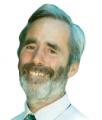
AT FIRST sight Brighton and Hove appear much the same as they have for many years but look a little closer and you will notice profound changes.
For a long time it presented a rather raffish face to the rest of the world. It was easily the biggest resort on the South Coast and the closest to the capital. Many people referred to it as London by the sea and rather confusingly, East Street was called Brighton’s Bond Street.
Brighton liked to think of itself as a sophisticated, smart resort but it was also seedy. It was the place to go for dirty weekends.
In the 1950s, one of the nation’s best known gangsters, Jack Spot, moved to the South Coast and set up home there followed by some of his mates. They often met at the race course, then much more popular than it is now, and made it a dangerous place.
The atmosphere was brilliantly captured by Graham Greene in Brighton Rock which came out before the Second World War and attracted the wrath of local councillors.
There was a similar outcry in the Fifties when Greene’s novel was made into a film starring Richard Attenborough.
In the Thirties there was also a series of gruesome trunk murders centred on the railway station and attracting widespread attention. The resort became known as the Queen of Slaughtering Places. Later on Keith Waterhouse, who lived in Brighton for a while, described it as helping the police with their enquiries.
But there was a smarter and more artistic side to Brighton. Theatrical people, headed by Lord Olivier, came to live in the resort. Actors included Anna Neagle, Flora Robson, Dora Bryan and John Clements while there were also personalities like Alan Melville and Gilbert Harding. Brighton was known as a tolerant town for homosexuals at a time when being gay was an offence and this attitude attracted people such as the playwright Terence Rattigan.
Brighton was big enough to have its own theatre, the Royal in New Road, which often starred well-known people. It had the best architecture of any resort and boasted the Royal Pavilion, an extraordinary palace ordered by the most artistic of Britain’s royals, George IV.
With its royal past and rich residents, Brighton seemed posh to many people but most of it was anything but.
Its slums were as bad as those in the East End of London and unemployment was high, particularly in tourism which was seasonal. Its air quality was below that in Sheffield. There was little heavy industry and thousands of residents commuted to London each day to get slightly better paid jobs.
After the Second World War, light industry sites were provided on the outskirts of town in places like Bevendean, Woodingdean and Hollingbury. At their peak the bigger factories such as Gross Cash Registers and KTM employed about 2,000 people each. But successive recessions knocked the stuffing out of them and there are few factories left.
Bucket and spade tourism has almost gone now but day trips are still popular. Weekend breaks, mostly off season, are much in vogue and there are still many conferences. But there are now more jobs in finance than in leisure.
Brighton is big in the arts and a tenth of jobs are in this sector. It also leads in technology. It has more shops than anywhere else in the South East outside London and a lot of them are independents. The Lanes used to be the most popular area for visitors but they have been overtaken by the eccentric North Laine.
Hove used to be a complete contrast to Brighton, being haughty and high Tory. Brighton used to specialise in maverick Tory MPs but now has the only Green MP in Britain, Caroline Lucas. Hove has a Labour MP, Peter Kyle, with a huge majority. Yet once it had been so Tory that many councillors were returned unopposed.
The council put road signs saying Hove – A Distinguished Resort until someone changed the third word to extinguished.
It had a surfeit of elderly people and at one time the council imposed limits on the number of care homes there could be in areas like Pembroke Crescent.
But the population became more mixed. Hove Council went Labour in 1995 and the first Labour MP for Hove, Ivor Caplin, was elected two years later. Church Road, once full of shops, became the area with the most restaurants.
Ordinary semis in streets leading down to Kingsway started selling for more than a million pounds.
When Brighton and Hove merged in 1997, I suggested half in jest the new authority should be called Brove. It may look much the same but it is profoundly different from the resort many of us remember. It is a brove new world.



Comments: Our rules
We want our comments to be a lively and valuable part of our community - a place where readers can debate and engage with the most important local issues. The ability to comment on our stories is a privilege, not a right, however, and that privilege may be withdrawn if it is abused or misused.
Please report any comments that break our rules.
Read the rules hereLast Updated:
Report this comment Cancel